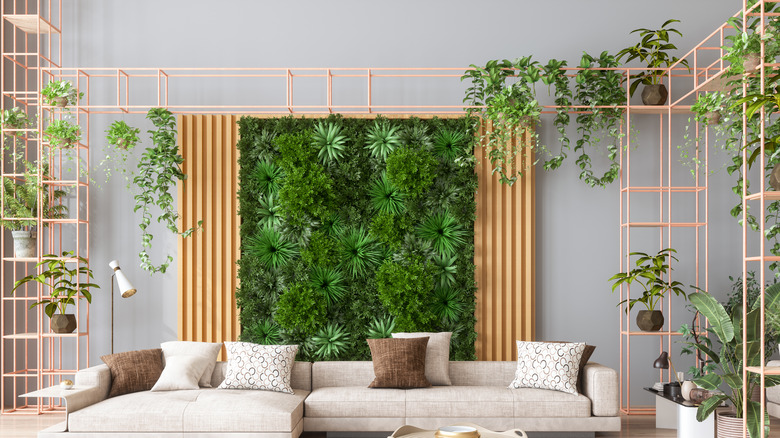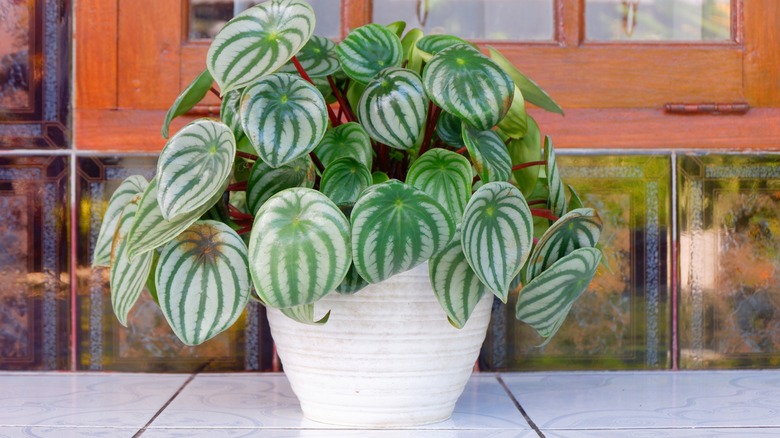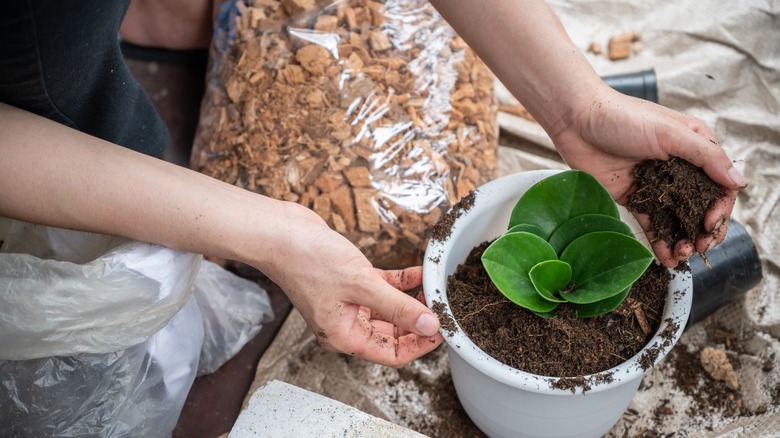You Don't Need A Green Thumb To Care For This Gorgeous Houseplant
A string of planting fails will derail any novice gardener from the green path. But getting back on track is easy if you grow peperomias (peperomia spp.), aka "radiator plants." Valued for their attractive, green foliage that appears smooth, mottled, variegated, or textured, with silver or red tinges (depending on the cultivar), peperomias feel right at home, demanding no undue changes in their growth conditions. They do very well sitting in a window installed over a radiator — a warm, bright, breezy atmosphere — which earned them their radiator plant epithet. They're safe to be around, sparing you grief lest a curious pet munches on their leaves.
Although peperomias may remind you of pizza, their ancestry can be traced to black pepper (Piper nigrum) plants. Albeit lacking the tantalizing taste of their spicy associate, radiator plants appeal to container gardeners seeking small plantings and fit right in with pots and hanging planters, thanks to their rosette, bushy, and trailing growth patterns. They can also be safely kept (and occasionally forgotten) on top of your home office's file cabinet, feeding off the artificial lights. Or they can thrive in bathrooms where high humidity will keep them sated. It's no exaggeration; they're among the easiest houseplants to keep alive.
Radiator plants like medium light and tolerate underwatering
Traditionally found growing as epiphytes on trees in their native tropical South American habitat, radiator plants enjoy basking in bright to medium indirect light and are a worthy addition to tropical terrariums. As indoor plants, they thrive in west or east-facing windows that afford them the right luminescence-heat mix (about 75 to 150-foot candles). Go lower, and the leaves start discoloring. Peperomias prefer temperatures to hover between 65 and 75 degrees Fahrenheit. Since these conditions are common to most households, there's no need for incessant thermostat tinkering. However, they must be kept out in a shaded spot during peak summer and shielded from cold drafts in the winter.
As radiator plants act like succulents, they don't mind being underwatered and prefer less water during colder seasons. Waiting for the soil to dry out completely before irrigating is best. But if you're the overwatering type, plant peperomias in clay pots, as they keep the growth environment dry while countering root rot. You can also place the potted plants in a pebble or gravel-filled, shallow water saucer. This encourages need-based water absorption without wetting the crown while fulfilling humidity requirements.
Radiator plants require little fertilization and pruning
Peperomias aren't heavy feeders, requiring no more than two low-dose fertilizers during the growth season. But if the foliage turns chlorotic, (the leaves turn yellow) they might require an application of nitrogen or potassium-rich fertilizers. Soak the foliage plants afterward to avoid salt build-up deeply. Since these herbaceous plants thrive on decaying woods, they've built a taste for humus-rich, well-draining soils over time. So, they're best planted in peat-lite mixes containing bark char, perlite, or styrofoam. They also improve water permeability and aeration.
That being said, radiator plants tolerate poor upkeep. An occasional pinching in early spring is enough to keep them in shape. If you cut out a bit of leaf and stem growth, use it to propagate new plants. Additionally, radiator plants are slow-growers and can be repotted at a three to four-year interval. Don't forget to keep an eye out for pesky insects like whiteflies, spider mites, and mealybugs; spray insecticidal soap before the problem gets out of hand.


